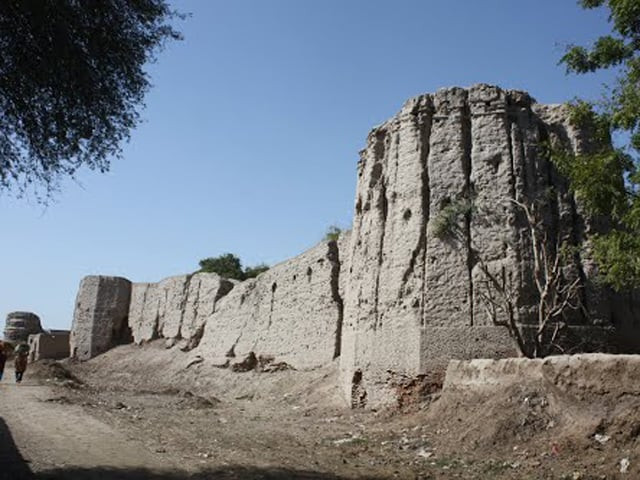Qila Ghazanfar Garh; conquered but not defeated
Ancient fort was built to protect the cities of Khangarh and Shujaabad

Qila Ghazanfar Garh; conquered but not defeated
In the past, Ghazanfar Garh was a hub of business activity. The region hosted a large market where people from all over used to come for trade. However, after the subcontinent was split, the fort was turned into a village. Now, the once great village is known as Muaza.
Constructed on approximately 40 bighas, the ancient fort was built to protect the cities of Khangarh and Shujaabad. Situated on the other side of the main road, concealed between a cover of fields and trees, the fort is known as a ‘hidden castle’. During wars, soldiers could attack their opponents from within the fort and no one would be the wiser.
The fort was established on the name of Nawab Ghazanfar Khan, who was the son of Nawab Shuja Khan, a member of the Sadozai clan which ruled Multan for nearly half a century.
Back in time: Multan and how history repeats itself
Nawab Shuja Khan gained fame for three reasons. Firstly, he provided a strong foundation for the Sadozai clan. Secondly, he kept Sikh invaders from conquering Multan with assistance from the people of Kabul. Thirdly, he founded and established cities in the name of his family members such as Shujaabad, Khangarh, Sikanderabad, Ghazanfar Garh and Muzaffargarh. For protection, Nawab Shuja Khan also built forts in each of these cities.
The walls of the fort are made with mud bricks and are seven feet wide. There are two doors and four towers atop four fences which provide an ideal vantage point to spot the enemy. The fort was conquered during the final attack by Sikh invaders during the rule of Nawab Muzaffar Khan while the castle was handed over to the Hindus who helped the invaders during the attack.
However, during the war, the fort’s walls and towers sustained heavy damage. As a result, not a single fence remains intact. Later on, the fort became a home for more than 100 Hindu families who established a Hindu and a Sikh temple. A mosque was also built in the area, but the structure is abandoned.



















COMMENTS
Comments are moderated and generally will be posted if they are on-topic and not abusive.
For more information, please see our Comments FAQ